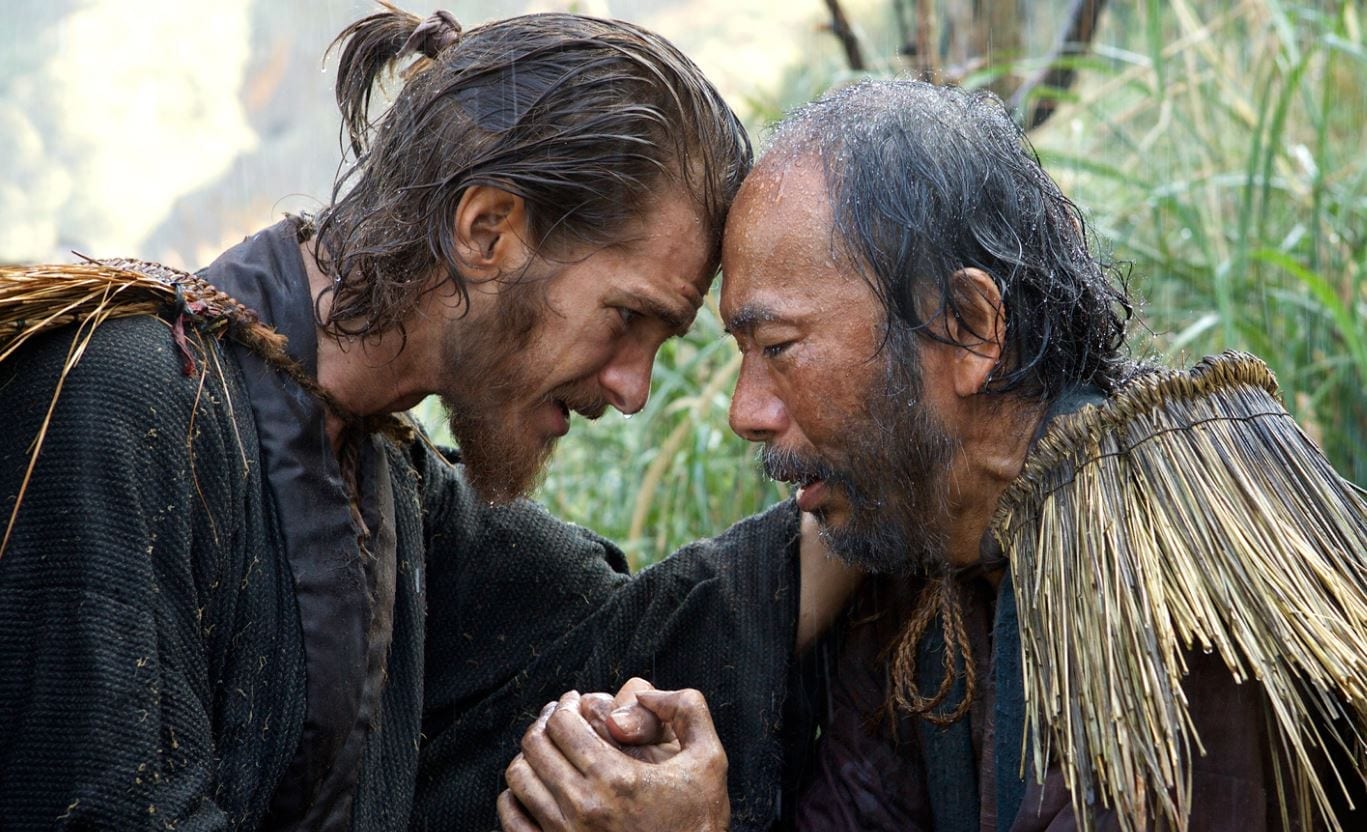The last film released by Martin Scorsese had Leonardo DiCaprio incomprehensible, scrounging and twisting around on the floor on a twenty minute Quaaludes trip. Here, we find Andrew Garfield and Adam Driver as a pair of Jesuit priests in the mid-seventeenth century traveling to Japan to find their mentor (Liam Neeson) who hasn’t been heard from in many years. If The Wolf of Wall Street was brash, bold, and excessive then Silence is thoughtful, emotional, and challenging. Scorsese is a master and the very fact that these two films live, side-by-side, in his filmography stands as a testament to that statement.
This review could very well end there. There is so much to say about Silence yet it is difficult to find the words to do it justice. Powerful. Unyielding. Hard, yet soft. We have Scorsese, the virtuoso of violence and crime, marrying his style with that of a more poetic and meditative form. His use of voiceover harkens to Terrence Malick and the meandering pace and visual flow of the film’s first half, have shades of Tarkovsky and Kiarostami. Yes, the film is driven by the plot of finding the priests’ mentor but we soon forget about that and it becomes about the survival of the Christian faith in both the oppressed Japanese Christians and the two young priests we follow.
Based on Shūsaku Endō’s book of the same name, the story is a fictionalised account of real historical events. It is a dark part of Japanese history that is explored and, along with last year’s The Handmaiden, illustrates the vast and complex past of a country that is so much more than Nintendo and anime. While modern Japan may be a technological utopia, it is clear that even the greatest of countries have their skeletons hiding in the closet.
In spite of the political and historical dimensions, at its heart Silence is an emotional and personal story of faith and strength; things that resonate no matter your beliefs or views. You don’t have to be Christian to appreciate Silence or its message. It’s simply a tale of human perseverance and survival.
Rodrigo Prieto’s cinematography is sublime as is the use of sound throughout the film which, yes, true to its title, utilises moments of silence perfectly. The acting is stellar all around: Liam Neeson in a career-best performance while Adam Driver deserves more chances to shine than he receives. Japanese comedian Issey Ogata plays the closest thing the film has to a villain – a Hans Landa-like, gurning inquisitor, less intense than Waltz’s Landa but just as subtly frightening. If there is one misstep in Silence, however, it is Andrew Garfield. His performance is solid and admirable yet lacks the maturity and deft hand needed. He overplays when he should underplay and underplays when he should overplay. This doesn’t ruin the film by any means but Garfield holds the character back from being one of Scorsese’s best.
THE VERDICT
In the end, Scorsese still proves that he’s more than simply gangsters and violence. He’s proved that in the past but people often forget it. Silence rounds off a “trilogy” of religious-themed films succeeding The Last Temptation of Christ and Kundun and he does it with quiet confidence and sophistication. In many ways, Silence transcends evaluation. You may question whether or not you liked it but you’ll come out of the cinema knowing you didn’t just watch a movie but experienced something truly divine – even if you don’t yet realise it.
Rating: ∞/10
Words by Stephen Pringle
